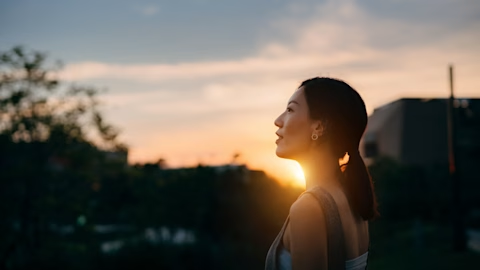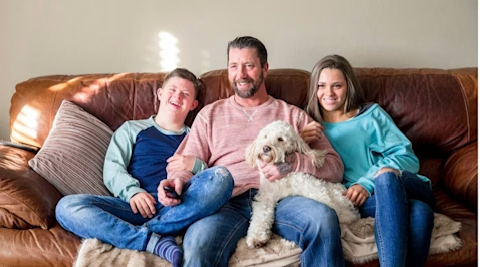How to be more present in the moment
Dr Laura Kampel Head of Clinical Services the Black Dog Institute shares some simple ways to stay connected and present

Learning how to be mindful or more present in the moment can bring about life-changing benefits, including helping to manage and reduce stress, anxiety and depression, opens in a new tab.
But why do so many of us find it hard to be in the moment?
“We’re living in this superbly connected world and are continually disrupted and interrupted with emails and messages,” says Dr Laura Kampel, opens in a new tab, Head of Clinical Services at nib foundation partner, the Black Dog Institute, opens in a new tab.
“We’re training ourselves to respond to everything and anything.”
This reactive state results in the opposite of being mindful, she says – and that is: mindless.
“It’s like when you are reading and realise after 20 minutes that you have no idea what you have read, or when you walk into a room and forget why you went in there,” she says. “Your mind is in a different place to your body, and is disengaged”
Here are some simple ways you can learn to be more present in the moment.
Practice gratitude
Looking for the good and practising gratitude can help you connect with the present and the “flourishing” part of life, Laura says.
Practise gratitude by noticing and appreciating the things and people around you. It might be a comfortable bed, a coffee break at work or a beautiful tree. It could be your health or a special friend.
You could start by writing down three things you are grateful for in a gratitude journal every day.
These small moments of appreciation start to link together and create this sense of contentment, and strengthen your ability to notice the good
Take notice of your surroundings
Turn on your senses and bring a “curious attention” to the things – both big and little – around you, says Laura.
When you go for a walk, notice how your body moves and feels. Look at what’s around you – from the expansive sky to the small flower. Feel the wind or sun on your face. Listen for noises close by and in the distance. Smell the air and nature around you.
Be more present at different moments of the day by bringing your attention to:
What you can hear: Listen to the radio or music without other distractions. Speak to a friend and really listen to their voice
What you can feel: Feel the clothes on your skin, your back against the chair or your feet on the ground
What you can taste: Think about the flavour and texture of your food
What you can see: Notice your surroundings, watch the sunrise or a bird fly across the sky
What you can smell: Smell the flowers (literally), notice the smells of food or the sea air
Practise mindfulness meditation
Mindfulness meditation , opens in a new tab teaches you the skill of paying attention to the present and noticing when your mind wanders off, and gently bringing it back to the present. Practising for five to 10 minutes a day is a good start, and using an app such as Insight Timer, can be a big help. For a formal practice, set a time each day and perhaps do a breathing technique, a body scan or a loving kindness meditation. Informal practice can be incorporating several “mindful moments” into every day, Laura says. “That’s where you bring all your senses into your experience.”
Having a shower is a great chance to do this. “Think about what the tiles feel like under your feet. How does the water feel? What does the soap smell like?”
Laura notes that mindfulness meditation is a skill that needs to be developed. “It’s very similar to exercise. We need to practise or train to get better at it.”
Focus on one thing at a time
“If you’re having a conversation with someone and sending an email at the same time, that’s not being present,” Laura says.
And even if you think you’re an adept multi-tasker at work, science shows, opens in a new tab multi-tasking does not equate to efficiency. A Nature, opens in a new tab study found heavier media multitasking is associated with a propensity to have attention lapses and forget things.
“If you’re working on a task and notice your thoughts getting hijacked, gently pull your awareness back to the task and complete it before moving onto the next one.”
Being more present in the moment takes effort, but the benefits will come, Laura notes. �“Give it a go and see for yourself.”

5 minutes for you: Motivating mantras to build workplace confidence
Try these motivating mantras to build resilience and self-confidence.

5 ways to completely wind down after work
Dr Gina Cleo, a habit-change specialist share expert tips to make winding down after work easy

12 tips for getting a better night’s sleep
Expert tips to improve sleep quality, boost energy and manage work stress for better rest.